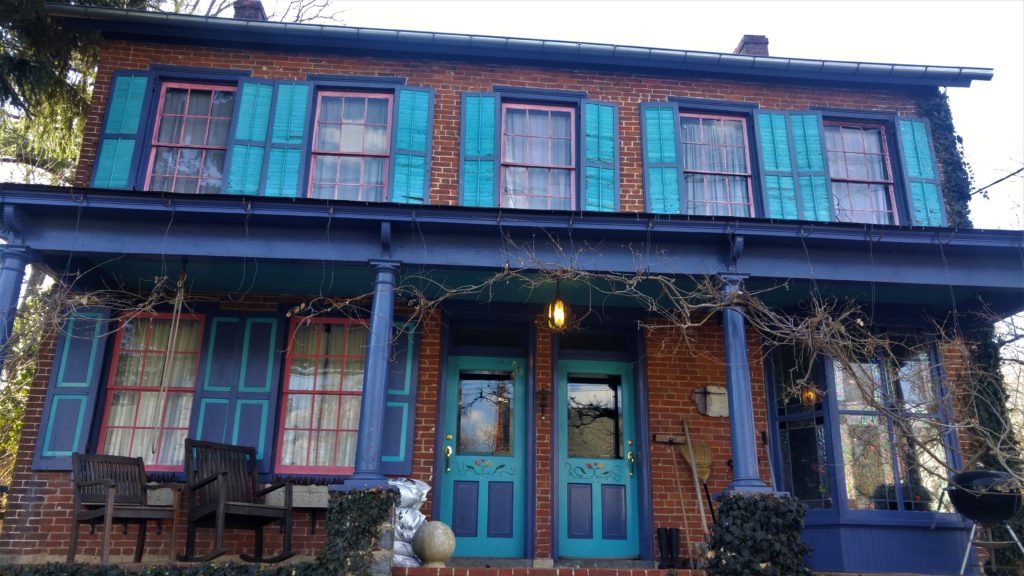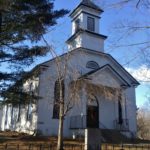How an Upper Bucks village got its start as the“Metropolis of Haycock”.
Cliffside Malibu in my native California is where the 1 percent goes to be cured of severe alcoholism. It’s a treatment center with Ralph Lauren furnishings, fully-equipped gym, plasma TVs, heated lap pool, sun deck, meditation gardens, 1800-thread bed linens, boutique soaps, Egyptian cotton towels, and cuisine served by executive chefs in a dining room with a panoramic ocean view. Luxurious living while kicking the booze demon.
There were no Cliffside Malibus in the mid-1800s, however. If you were a rich New York City businessman, the right antidote was fresh country air in Bucks County.

Such was the case for George Dutch who made a fortune as an export-import merchant in the era of clipper ships. His only son George Jr. grew into maturity as a city drunk. About that time, George Sr. learned the Stokes family had listed for sale their 377-acre homestead in Upper Bucks County bordering today’s man-made Lake Tohee. The family had owned the tract northwest of Haycock Mountain for more than 100 years dating from 1737. Back then it was known as Stokes Meadow and straddled the stage coach mail route between Philadelphia and Bethlehem in the Lehigh Valley.
What attracted Dutch was the remoteness and beauty of the location, the perfect balm for raising four daughters and insulating his son from his booze habit. Dutch took possession in 1837 and built a 10,000-square-foot, one-story English manor house surrounded by plazas enhanced by lofty stone pillars. Doylestown contractor Samuel Kachline built the home with a peaked, sloping roof and large windows that illuminated spacious dining areas and bedrooms . People passing by were astounded to see such an extraordinary house in the remote wilds of Upper Bucks. Locals called it “Dutch’s Folly”.

In 1842, Daddy Dutch moved back to the city and deeded the home and acreage to his recovering son, 20. Five years later, Junior cashed out the homestead and left for Italy. He sold the entire farm with its mansion and the old Stokes farmhouse to Paul Applebach who, with his brother Henry, had big plans for Stokes Meadow. They knew a thing or two about development as descendants of prominent iron-makers in Germany. Paul, who would become a Union general in the coming Civil War, envisioned an upscale village around the Dutch mansion which eventually was torn down. Building lots were set out on both sides of the road. Thirty tidy brick and wooden houses, a couple of churches and a general store soon took shape. When the U.S. Post Office opened in 1874, the picturesque town officially became Applebachsville. A “graded” school also distinguished the settlement. John S. Stahr, one of the teachers, later became president of Franklin and Marshall College in Lancaster.

Outsiders marveled at the grand homes in a frontier area characterized by hard scrapple living, deep forests, Haycock Mountain and a proliferation of prehistoric volcanic rocks that made farming difficult. People described the village tongue-in-cheek as “the Metropolis of Haycock.” Others had another laugh-out-loud word for it: “Snitzbachsville”. Religion in town was very ecumenical though predominantly Lutheran. Ministers of all Christian religions were invited to preach. But if you were a Methodist, steer clear. As written into the charter of the German Evangelical Lutheran and Reformed Mennonite Church, all ministers were welcome “except Methodist preachers, to whom no permission under any circumstances shall be granted.” Geez, as a kid I was raised a Methodist. Would I need to tip toe through Applebachsville?

I put that to the test on a mini adventure to scope out the metropolis. The afternoon temperature was 20 degrees when I arrived. The only hardy sole I found was a friendly Lake Tohee ice fisherman who demonstrated his skill with a motorized drill, nimble feet and endurance. The houses in the village are substantial, mostly made of brick. The history of the settlement is understated except at the restored Stokes family farmhouse tucked back away from the road down a quarter-mile-long gravel road. A gentle, rural pace of life still exists as it did 100 years ago. A former Haycock Township supervisor put it this way several years ago: “People who live here think it’s a secret they’d like to keep for themselves.” Neighbor Michael Hartley noted the nature of the community. “Deer, rocks and trees. They are the main attractions. It’s kind of nice to be able to walk over to the farmette next door and buy a couple of fresh eggs for breakfast.”
Sources include “Place Names in Bucks County Pennsylvania” by George MacReynolds published in 1942; “A Hamlet Frozen in Time” by Joseph P. Ferry published in The Morning Call newspaper on Nov. 27, 1992; and assistance from Nancy Janyszeski of the Haycock Historical Society.
C

